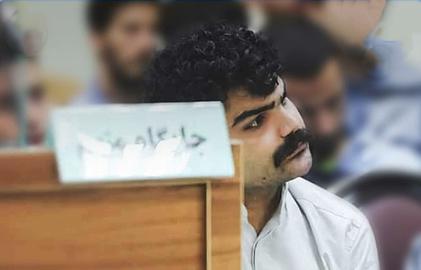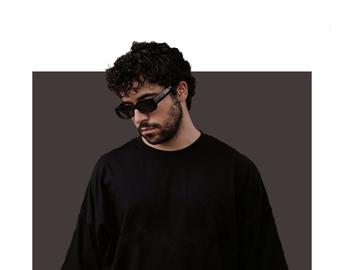There has been widespread media coverage of events in Kobane and the battle between Kurdish Peshmerga fighters and Islamic State insurgents there. Many news outlets were particularly interested in Peshmerga women. Iranian photographer Maryam Ashrafi, who lives in Paris, has chronicled the lives of these women for many years, living with them and getting to know their daily lives. IranWire spoke to her about her work, the Peshmerga women of Iraqi Kurdistan and the challenges she has faced as a photographer.
Over the last year, there has been increased interest in Kurdish women fighters. What makes your photographs very distinctive is that they record both these women’s feminine sides and the gritty, harsh lives they live as soldiers. Your photographs juxtapose, say, a mirror, a dresser, toiletries, or baby paraphernalia with guns or military equipment. Can you say a little about the multi-faceted nature of your photographs?
Maybe the multiple facets you mention originate from one very simple source: the ordinary, everyday lives of these men and women. They have human needs, and this has not changed simply because they have taken up arms. The challenge is to not focus on what these soldiers’ female identity brings to their job as a fighter, but to show their human side and draw attention to their basic needs.
For example, one young woman, Kohistan, joined Komalah [the Organization of Revolutionary Workers of Iranian Kurdistan] in her early twenties; as a result, she can no longer return to Iran. Once in a while, her parents travel to Iraqi Kurdistan and stay with her for a few days. When they visit, Kohistan has a few days of feeling like she belongs to a family; she can resume her relationship with her mother. Many of the young men and women who joined Komalah and the Kurdish Democratic Party [KDP] have similar stories. In the harsh conditions of the camps, it is as if these women are expected to just block out and ignore the feminine aspect of their lives. Then they are expected to just return to this part of their lives after the war is over. By living with them, I became convinced that these various aspects are not separate.
Of course, the situation for female Party of Free Life of Kurdistan (PJAK) members in the Qandil mountains was different. These women have chosen a military life; they avoid relationships and family.
I met some Komalah Peshmerga who had been secretly active in Iran before coming to the camps in Iraqi Kurdistan. For security reasons, they did not provide any details. They had to leave Iran before they were identified. The parents of Tavar, the child you see in one of my photographs, were among them. Like many children in these camps, Tavar grows up in a different environment. Seeing her parents carrying guns is nothing out of the ordinary for her.
There are photographs in this collection that go beyond mere photojournalism — they are poetic. In recording the subject, is it as if you have recorded the dreams and yearnings of these women at the same time. What do you think of this description? How conscious were you of doing this?
This interpretation flows from the image we have of fighters, whether they are men or women. And that is how I saw them at the beginning. So I lived with them for a while in order to get to know them better. Eventually I began recording moments that could now appear poetic to some. I do not quite agree with this interpretation. I think I tried to capture the most ordinary moments of these people’s lives. Perhaps when you put it next to the fighting, these moments seem poetic.
This mixture of ordinary lives and guns have become a tradition for them. They have been fighting for decades, mostly in the mountains and under harsh conditions. Of course, Komalah and KDP soldiers are not experiencing the same displacement they once were — now they’re in established camps — but their lifestyle is rooted in that displacement. That is why you cannot separate their ordinary lives from their fighting lives. In the same way that they carry rifles over their shoulders, they might have combs or toiletries in their pockets. Of course, for the members of PJAK in the Qandil mountains, the constant movement from one place to the next continues.
The current image of Kurdistan projected by the media is strange. The image we see of female fighters suggests a modern society, not only when compared with the standards of the Middle East, but also when compared to the situation of women around the world. And yet, at the same time, there are traditional limitations and religious pressures on women in this society. How did you react to this contradiction?
This is an important point. Kurdish women are fighting not only to establish their rights as Kurdish citizens, but also to prove themselves as women in a traditionally patriarchal society. This society, which is trying hard to establish its identity in the region, still limits women. Many negative issues persist, such as forcing girls to marry when they are still underage, the “woman for woman” tradition, when families agree to two marriages between them, effectively “exchanging” women. There is also the issue of female circumcision. There are honor killings. And there is a lack of work opportunities for women, rooted in outdated and unjust traditions coming out of a very patriarchal society.
Of course, many of these women and parties have come to the conclusion that armed struggle and showing women on the frontline is not enough to do away with such rules and taboos. So they try to better inform the society in general, and women in particular, through television and radio and through articles and books. Also, we must not ignore the role played by civil activists and groups that work for women’s rights in many towns in Kurdistan. I believe that we can guide society through a combination of cultural activities, the presence of women in various aspects of society, and by exploiting economic opportunities. These taboos can be shattered. Women will no longer be denied rights just because they are women.
Without a doubt, this pattern of struggle and change can extend beyond Kurdish cities and serve as an example for all societies where women are treated unjustly and are denied their basic human rights.
As a woman photojournalist, did you find you faced discrimination while you were in Kurdistan?
No, perhaps because most of my time was spent with political parties and very close to women. The fact that I am a woman helped me to get closer to them and work in an environment of trust and ease.
You began taking photographs as a way of looking into social issues. How did these political and social concerns find their way into your photos?
It was the result of years of my own experiences, and my interest in what goes on in the world. My interest in sociology and the effects of politics on people’s lives helped me express my views and feelings with the help of my camera — views and feelings that I could not express adequately through words.
If, in a war-torn area, you come across somebody who needs help — say an injured child who is lying next to the lifeless body of her mother — do you immediately help her or first record the moment with your camera?
Each specific moment or situation brings its own specific reaction. As for your example, I think recording the moment can help to portray the effects of war. One can hope that a collection of such images and historical documents can guide the world toward opposing wars and increase pressure for finding solutions other than war and bloodshed. So capturing that moment could help that child more and might contribute to preventing the repeat of such tragedies.
But other situations are possible too, when I might feel that I can save somebody’s life or help somebody instead of just pausing for a few moments and taking pictures. In that situation, the camera can be put aside for a short while.
For more photographs by Maryam Ashrafi, visit her website.
visit the accountability section
In this section of Iran Wire, you can contact the officials and launch your campaign for various problems





































comments